Using the data compiled from the Alphacool Monsta 360 thermal testing I have compiled the following tables in an attempt to show other ways of how the Monsta performance varies against itself at the flow rates and fan speeds tested. Let’s first look at the raw W/10DT data that we’ll be using to generate these:
Effectively these show percentage gains relative to a reference point. It’s an interesting way to show gains/losses while changing a variable. This first table shows performance gain or loss relative to 1.0GPM flow rate:
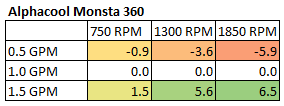
We can also focus on 1300RPM as our reference and see how much gain or loss in performance we get by changing fan speed:
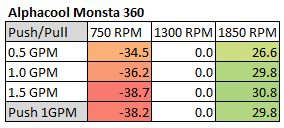
As expected the change is dramatic. How about we combine both flow rate and fan speed as reference points and have a look at 0.5 GPM & 750 RPM as the reference point.
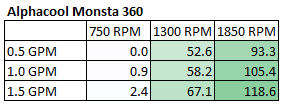
Lastly, we change the reference and choose our center 1300 RPM and 1.0 GPM as our reference point to show both effects concurrently:
So from the data above we can get a very good idea of how the Monsta 360 performs relative to itself. But there is a large selection of 360mm radiator models to choose from, released from numerous manufacturers. So, we need to start comparing performance between them. To see how the Monsta performed against the other radiators tested, I have included the averaged flow rate comparison charts from the Round Up. We know that the flow rate has little impact on thermal performance so averaging of the 3 flow rate results gives us a good look at head to head performance at the rpm speeds tested at with even less error.
Let’s start off with the Push only data:
The monsta starts off at 750RPM in the middle of the pack. Given the thickness of the radiator it’s surprising that it can still compete at all with such low static pressure.
At 1300 RPM we expected the Monsta to start doing better. Sadly this is not the case.
AT 1850RPM the Monsta is doing worse relative to the competition. Let’s now look at push/pull to see if the static pressure helps it out:
At 750RPM the Monsta is at the very top for performance. This is a huge difference from the Push only data. Clearly this fat radiator loves a second set of fans.
At 1300RPM the Monsta is still holding it’s own, but it’s starting to be overtaken by radiators that are geared for very high static pressures and flow rates with much higher FPI.
Despite the thickness of the Monsta – it’s low FPI is not going to compete at the very top once the airflow gets high enough.
With such a thick radiator it can be interesting to compare whether a push/pull setup would beat the Monsta in push while maintaining a similar or slimmer thickness. To do this comparison we focus on only 1GPM data and combine push (red) and push/pull (blue) data.
At 750RPM the Monsta in push is beaten by any other radiator in push/pull. This includes tiny slim radiators. Of course it’s also beaten by a slim radiator like the GTS in push too.
At this flow rate though the Monsta in push/pull is unbeatable. This plot shows just how much of a difference push/pull can make on the right radiator at the right test point.
At 1300 RPM the Monsta results move towards each other simultaneaously getting worse and better relative to the competition.
At 1850RPM there are plenty of choices that beat the Monsta whether or not you run push or push/pull.
From all of these results we can create a “master performance factor”. The radiator with the best cooling ability (W/10ΔT) at each gpm/rpm combo was awarded a score of 100, and each other radiators W/10ΔT result was scored as percentage of the top performer:
All those high numbers and green boxes confirm what was shown previously, that the Monsta 360 is a great performer, particularly with low speed Push/Pull fans, taking 1st place in one of the three flow rates tested at 750 rpm. Despite this particularly niche tuning the Monsta never does badly as an all rounder though.
Then all these percentage scores were averaged giving us the Averaged Performance Factor of each radiator. This way of looking at the comparison takes away any advantages that a radiator may have at higher or lower fan speeds and looks at an overall average. While this appears fair it does tend to favor those radiators that are all-rounders and those radiators which do very well at high RPM. Most users should be more focused on their specific use case. Check in the Round Up for performance comparisons at every gpm/rpm combo for even more details and cross comparison results.
Again let’s start off with push only data:
We already know that the Monsta prefers push/pull. However the score of 88.2 is respectable and puts the Monsta in 15th place.
For Push/Pull the monsta is far more compelling and finishes in 6th place.
Next up – Summary!








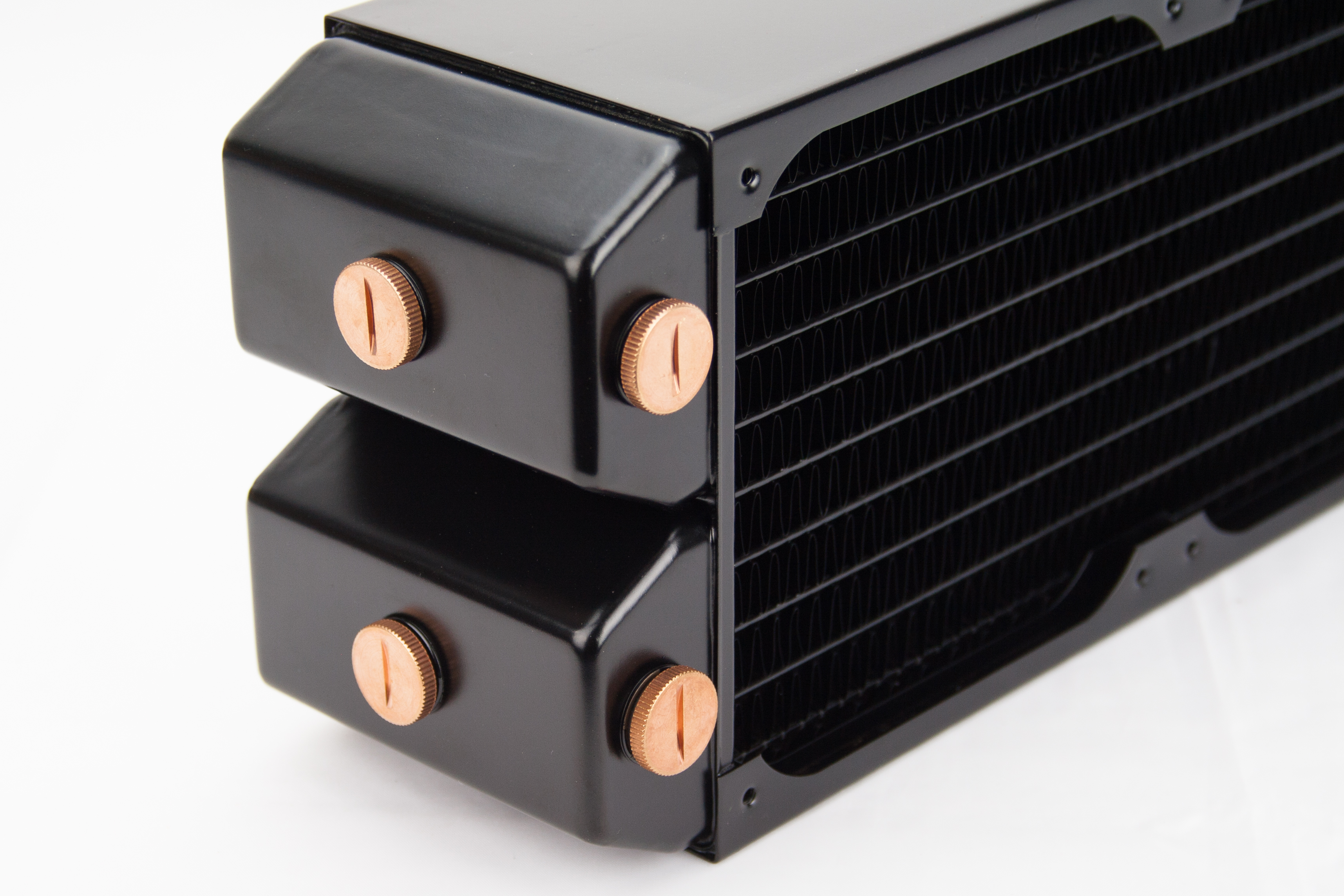
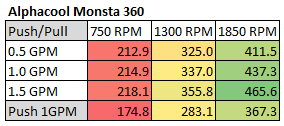
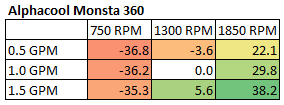
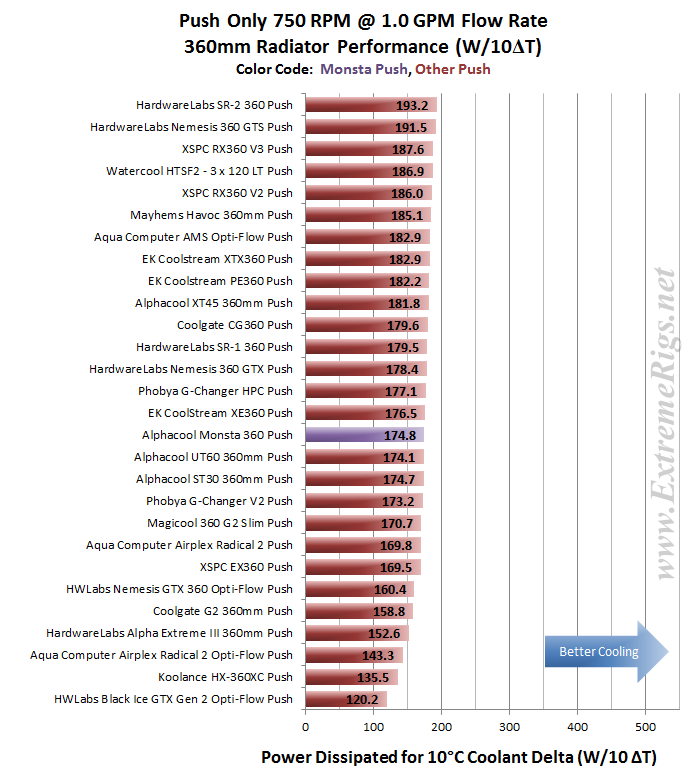
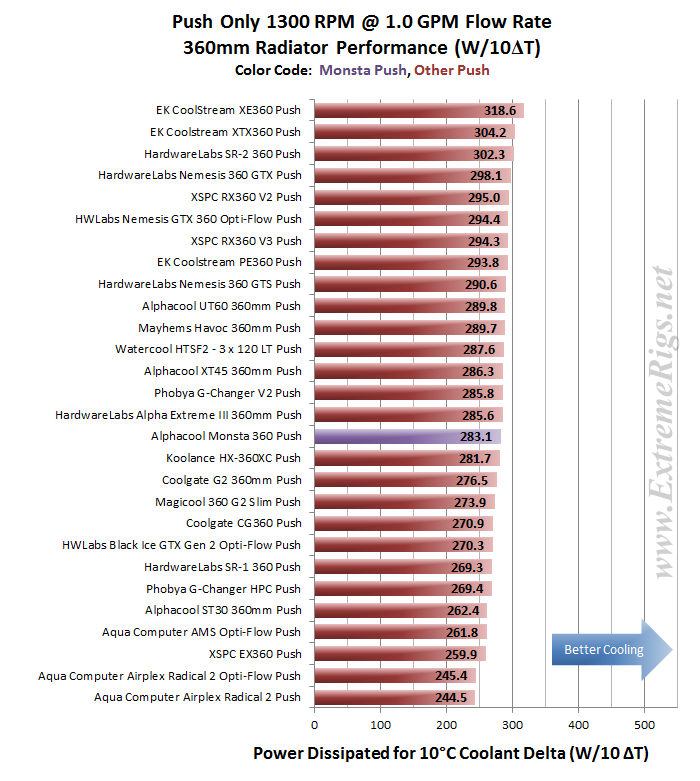
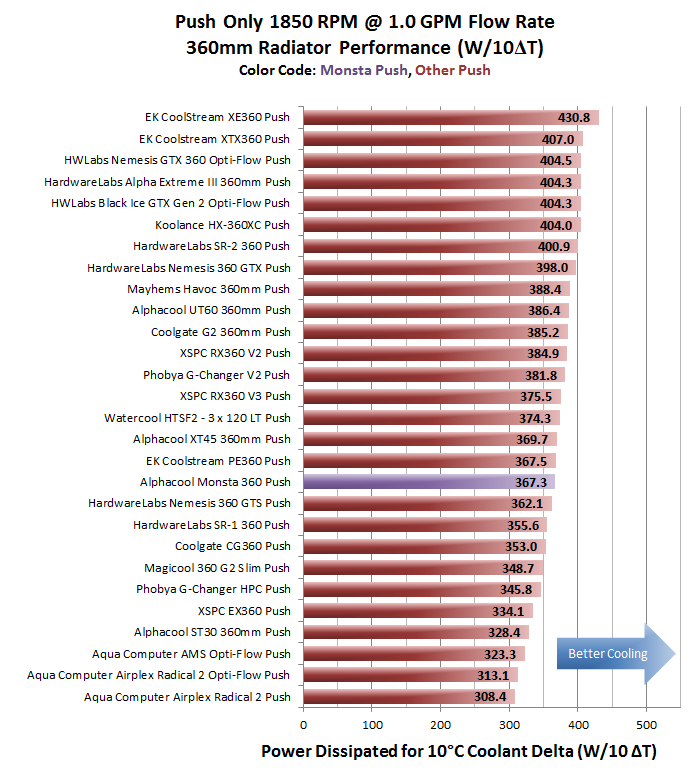
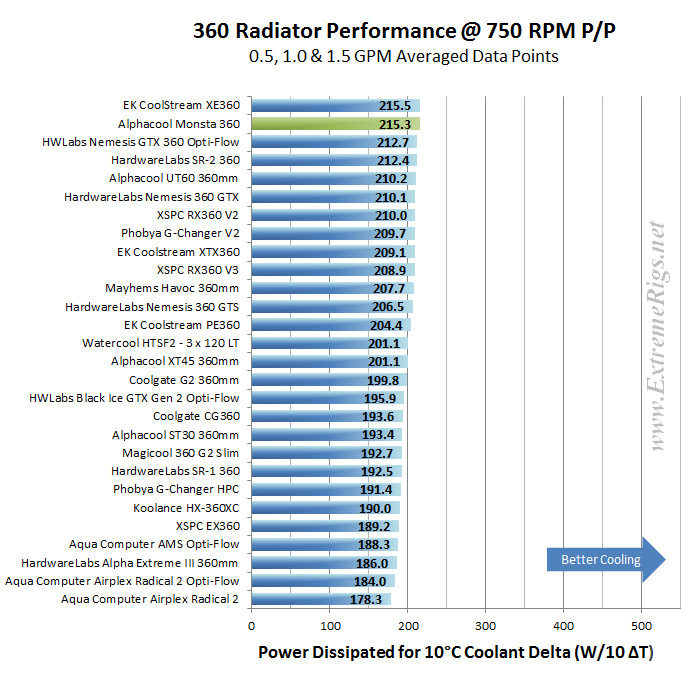
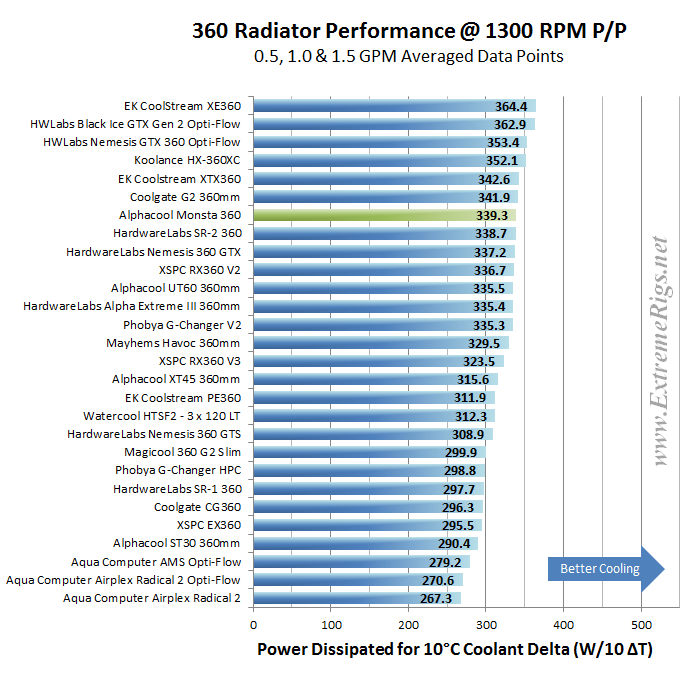
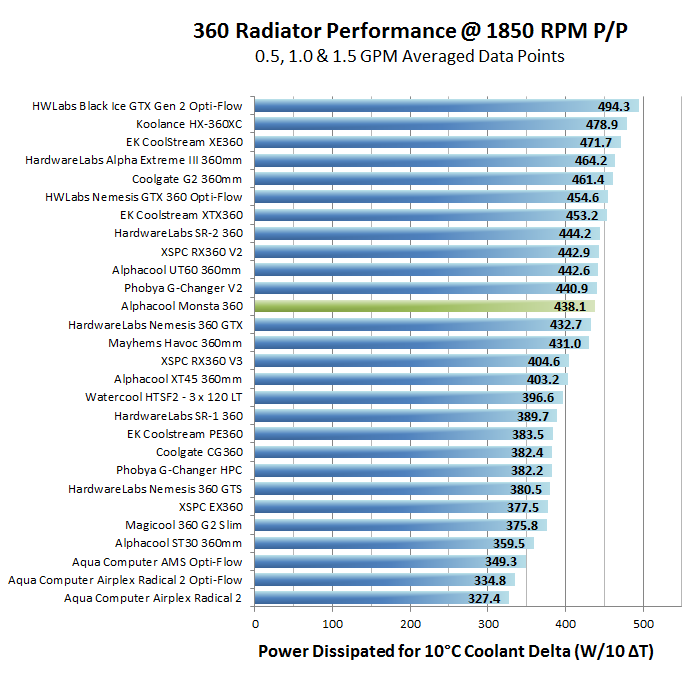
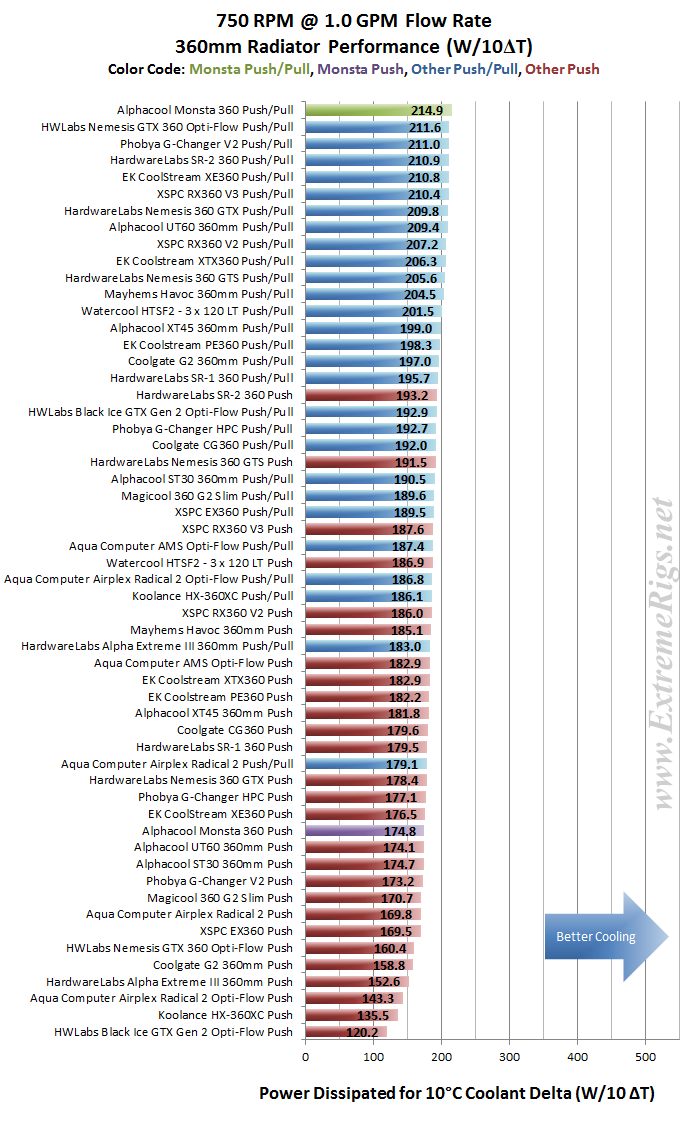
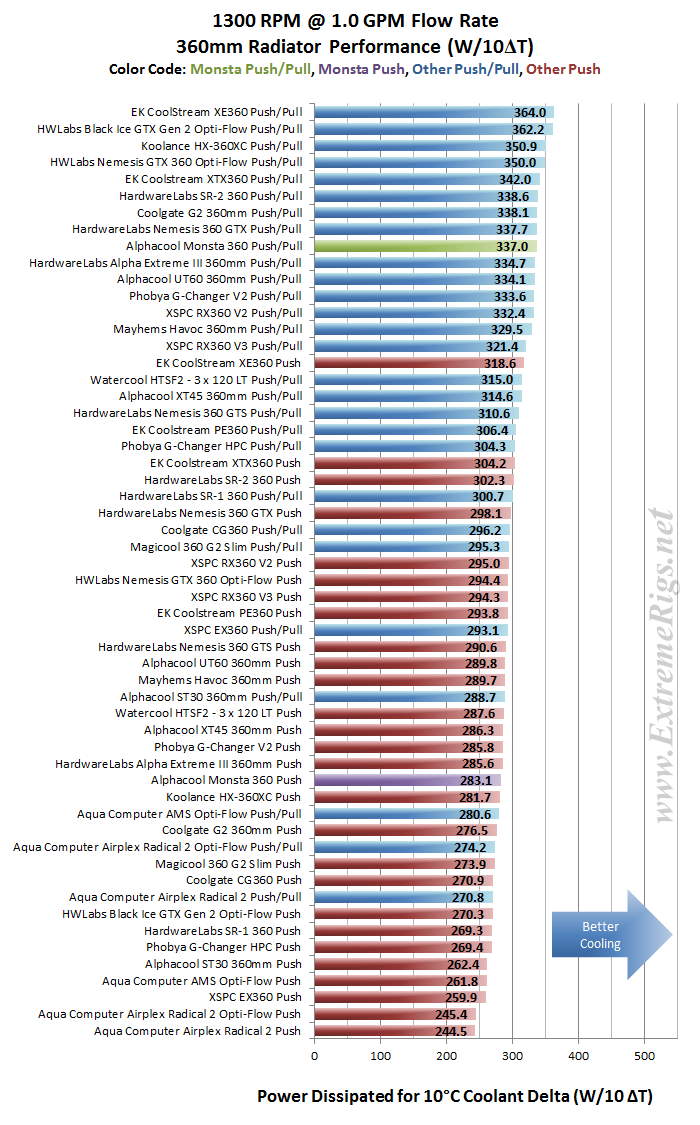
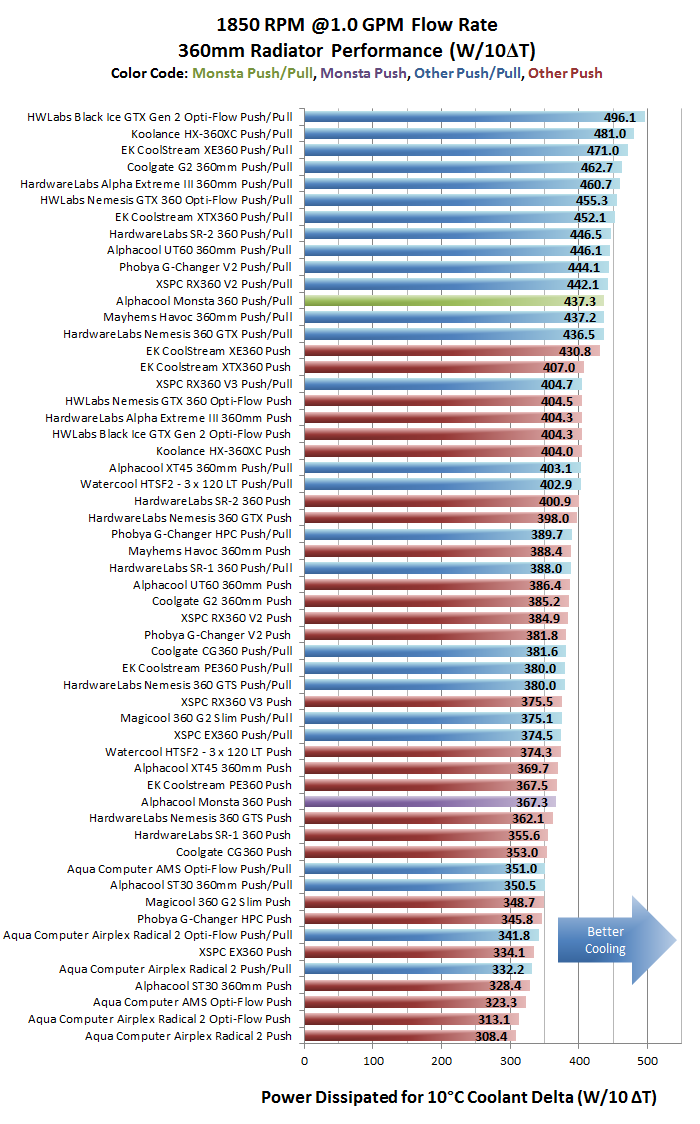
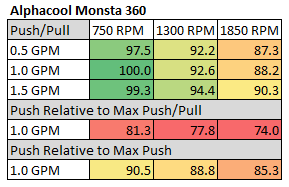
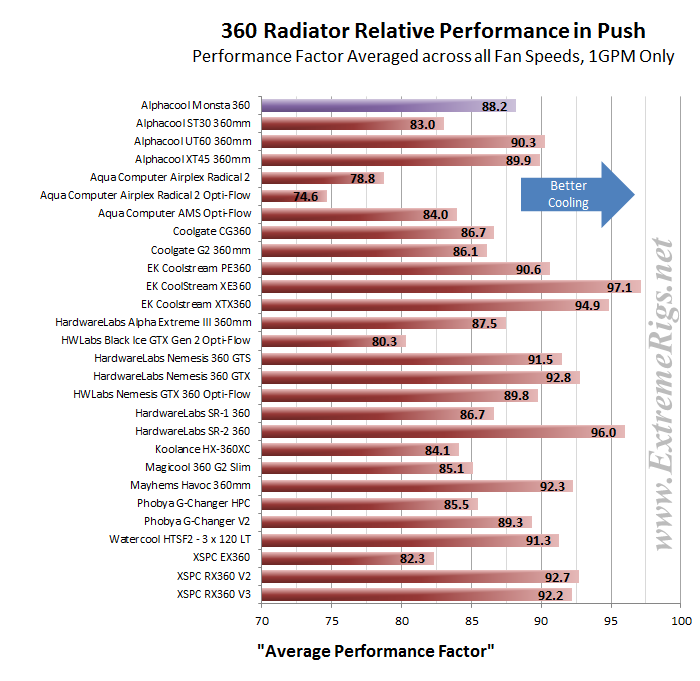
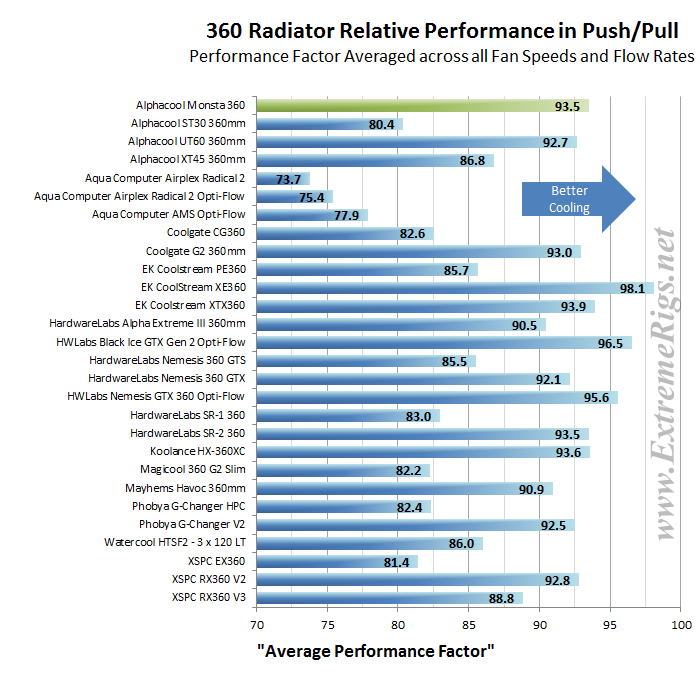



[…] Alphacool Monsta 360 Radiator Alphacool ST30 360 Radiator AquaComputer Airplex Radical Copper 360 Radiator AquaComputer AMS 360 Radiator Coolgate CG 360 Radiator EK SE 360 Radiator EK XTX 360 Radiator EK XE 360 Radiator Hardware Labs Black Ice GTX 360 Radiator Hardware Labs SR2 360 Radiator Phobya G-Changer HPC 360 Radiator XSPC RX v2 360 Radiator […]
[…] […]
[…] the thickest 280mm radiator of our test group. We saw some interesting and unexpected results when we reviewed the Monsta 360 last year. The 280mm version only has ~10% less surface are than the 360, so might come up with […]
Comments are closed.